Q355 welded steel pipe, widely used in construction, machinery, bridges, and other fields, directly affects the safety and durability of engineering projects due to its performance and quality. As an important category,
Q355 straight seam steel pipe has its own advantages in practical applications due to differences in its production process and performance characteristics.
First, the Material Characteristics of Q355 Welded Steel Pipe
Q355 is a low-alloy high-strength structural steel. The "Q" in its name represents yield strength, and "355" indicates a yield strength of 355 MPa. Compared with ordinary carbon steel, Q355 steel has higher strength and better comprehensive performance, especially maintaining good toughness at low temperatures. This material characteristic makes Q355 welded steel pipe perform excellently under large loads or complex stress conditions, making it the preferred material for many major projects. The chemical composition of Q355 steel mainly includes elements such as carbon, silicon, manganese, phosphorus, and sulfur, and its performance is further improved by adding small amounts of alloying elements (such as niobium, vanadium, and titanium). This compositional design not only ensures the material's strength but also considers weldability and formability, providing a solid foundation for subsequent welded steel pipe processing.
Second, the production process of Q355 straight seam steel pipe.
Q355 straight seam steel pipe is a steel pipe manufactured by processing steel plates or strips through forming, welding, and finishing processes. Its production process mainly includes the following steps:
1. Steel plate pretreatment: First, the Q355 steel plate undergoes pretreatment such as leveling and edge trimming to ensure the flatness and dimensional accuracy of the plate. This step is crucial for the subsequent forming and welding quality.
2. Forming process: Through multi-pass roll forming, the flat plate is gradually bent into a cylindrical shape. Precise control of the roll forming parameters is required during the forming process to avoid scratches or deformation on the material surface.
3. Welding process: The core process of straight seam welded steel pipe is welding. Common welding methods include high-frequency resistance welding (ERW) and submerged arc welding (SAW). High-frequency resistance welding is efficient and low-cost, suitable for mass production; submerged arc welding provides deeper penetration and higher weld quality, suitable for the production of thick-walled steel pipes. Strict control of parameters such as temperature, speed, and pressure is required during welding to ensure weld strength and sealing.
4. Weld Treatment: After welding, the weld needs to undergo internal and external burr removal and heat treatment (such as normalizing) to eliminate welding stress and improve the overall performance of the steel pipe.
5. Finishing and Inspection: Finally, the steel pipe undergoes straightening, cutting, and marking processes, and is tested using ultrasonic, eddy current, or hydrostatic tests to ensure product quality meets standards.
Third, Characteristics and Advantages of Q355 Straight Seam Steel Pipes.
Compared to spiral welded steel pipes, Q355 straight seam steel pipes have the following significant characteristics:
1. High Dimensional Accuracy: The forming process of straight seam steel pipes determines their higher accuracy in outer diameter and wall thickness, making them particularly suitable for applications with strict dimensional requirements.
2. High-quality welds: Straight seam steel pipes have relatively short and straight welds, facilitating quality control and non-destructive testing, resulting in a low weld defect rate.
3. High production efficiency: Straight seam steel pipe production lines are highly automated, suitable for large-scale, standardized production needs.
4. Flexible applications: Straight seam steel pipes can be customized to different lengths according to project requirements, reducing on-site cutting and waste.
Fourth, Application Areas of Q355 Welded Steel Pipes.
Due to its excellent performance, Q355 welded steel pipes are widely used in many fields:
1. Building structures: Used for load-bearing structures such as columns and beams in high-rise buildings, stadiums, airport terminals, and other large buildings.
2. Bridge engineering: As key components such as main beams and piers of bridges, capable of withstanding vehicle loads and natural environmental conditions.
3. Machinery manufacturing: Used for the frame and support structures of engineering machinery and agricultural machinery.
4. Energy transmission: Some Q355 welded steel pipes, after special treatment, can be used for low-pressure transmission pipelines for oil and natural gas.
5. Shipbuilding: Also used in ship bulkheads, decks, and other parts.
Fifth, Current Market Status and Development Trends of Q355 Welded Steel Pipes
In recent years, with the continuous investment in infrastructure construction and the upgrading of manufacturing in my country, the market demand for Q355 welded steel pipes has steadily increased. Especially driven by the "new infrastructure" and "dual-carbon" goals, the rise of green buildings and prefabricated buildings has brought new opportunities for high-performance welded steel pipes. From the supply side, major domestic steel companies such as Baowu and Ansteel have mature Q355 welded steel pipe production capabilities, and some companies' products have been exported to Southeast Asia, the Middle East, and other regions. However, the industry also faces challenges such as fluctuating raw material prices and stricter environmental requirements. In the future, welded steel pipe manufacturers need to further optimize processes, reduce costs, and develop new products with higher strength and greater corrosion resistance to meet market demand.
Sixth, Purchase and Usage Recommendations
For users who need to purchase Q355 welded steel pipes, the following points are recommended:
1. Clarify Requirements: Determine the specifications, wall thickness, and corrosion resistance requirements of the steel pipes based on the usage environment (such as load, temperature, and corrosiveness).
2. Choose reputable manufacturers: Prioritize manufacturers with relevant qualifications (such as API and ISO certifications) to ensure product quality traceability.
3. Pay attention to testing reports: Request suppliers to provide reports on mechanical properties and non-destructive testing. If necessary, commission third-party re-inspections.
4. Storage and maintenance: Welded steel pipes should be protected from impacts and humid environments during transportation and storage to extend their service life.
With technological advancements and expanded applications, Q355 welded steel pipes and their derivative products will continue to play a vital role in national economic development. Understanding their characteristics and applications will help engineers and purchasers make more informed choices and promote the healthy development of related industries.
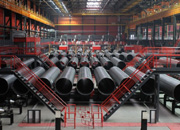 Threeway Steel is known as a professional supplier engaged in manufacturing and distributing a wide range of steel pipe, and our headquarter located the central part of China – Hunan and six associated factories throughout China.
Threeway Steel is known as a professional supplier engaged in manufacturing and distributing a wide range of steel pipe, and our headquarter located the central part of China – Hunan and six associated factories throughout China.
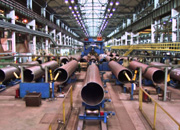 Threeway Steel is known as a professional supplier engaged in designing, manufacturing and distribution of a wide range of steel products with the headquarter located the central part of China – Hunan and six associated factories throughout China.
Threeway Steel is known as a professional supplier engaged in designing, manufacturing and distribution of a wide range of steel products with the headquarter located the central part of China – Hunan and six associated factories throughout China.
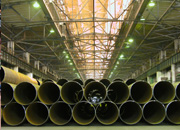 Threeway Steel is known as a professional supplier engaged in designing, manufacturing and distribution of a wide range of steel products with the headquarter located the central part of China – Hunan and six associated factories throughout China.
Threeway Steel is known as a professional supplier engaged in designing, manufacturing and distribution of a wide range of steel products with the headquarter located the central part of China – Hunan and six associated factories throughout China.
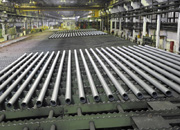 Threeway Steel is known as a professional supplier engaged in designing, manufacturing and distribution of a wide range of steel products with the headquarter located the central part of China – Hunan and six associated factories throughout China.
Threeway Steel is known as a professional supplier engaged in designing, manufacturing and distribution of a wide range of steel products with the headquarter located the central part of China – Hunan and six associated factories throughout China.
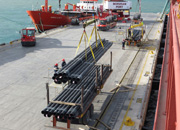 Threeway Steel is known as a professional supplier engaged in designing, manufacturing and distribution of a wide range of steel products with the headquarter located the central part of China – Hunan and six associated factories throughout China.
Threeway Steel is known as a professional supplier engaged in designing, manufacturing and distribution of a wide range of steel products with the headquarter located the central part of China – Hunan and six associated factories throughout China.

